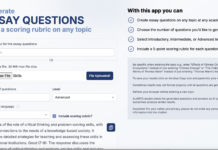
Top Hat (2020) Higher Ed Students Grade the Fall 2020 Semester, Top Hat (accessed November 19, no published date)
Top Hat is an online publisher serving the education system. This is another quick and dirty survey – dirtier than most, in fact, as we shall see. The focus of this study is the the experience of students in the fall semester and whether their experience has improved from the poor experience of remote learning in the spring. In particular, do students believe they are getting value for their higher education investment?
For a full list of studies, see Research reports on Covid-19 and emergency remote learning.
Methodology
Survey responses were collected by Top Hat from 3,412 undergraduate students in the United States and Canada between October 2-11, 2020. The sample was as follows:
- USA: 2,799 (82%)
- Canada: 546 (16%)
- Other: 67 (2%)
- most (71%) were from 4 year public institutions.
No information is provided about how the data were collected.
Main results
The bad news
- Students continue to view online learning as the poor cousin of the traditional in-class experience
- Learning virtually on the whole is seen as less engaging and student motivation outside of class continues to suffer
- Many students are also contending with a cumbersome patchwork of technologies to ‘attend’ lectures, connect with faculty and access readings and other assignments.
- The lack of reliable access to computers, the Internet and quiet study spaces are being deeply felt by many students.
The good news
- a slight majority of students agree that their instructors are taking steps to make learning in the virtual classroom more active.
- when instructors work to create a sense of community and to make learning more interactive, students are more engaged—and more motivated both in and out of class.
My comments
There is considerable value in many of the quick and dirty surveys that have been conducted, but I was not impressed with this one. The problem lies with the methodology and lack of detail.
There are 20 million students in the U.S. higher education system alone. 2,800 is a tiny sample (0.014%). We know there are a variety of variables that will influence students’ responses to emergency remote learning. However, with such a small sample it is not possible to know – and certainly no information was given – on whether Canadian students differed from the counterparts in the USA in their responses, for example. This is important because the context, in terms of the rate of infection, in the fall opening, at least, was very different between the two countries. We do not know whether the institutions from which the students were sampled had extensive or no prior experience in online learning, or to what extent that influenced responses.
And lastly, what we are again seeing is that well established best practices in online learning, such as active learning, building a sense of community, and empathy, make an enormous difference – but we knew that already, and have known it now for nearly 20 years.
The issue with the response to Covid-19 is NOT not knowing what to do, but getting that information and training from less than 10% of faculty to 100% of faculty in a very short period of time.
It is important to know how students are responding, but we need a much better foundation for exploring this than this study provides. This will mean doing more in-depth studies of student performance and behaviour as a result of the move to emergency remote learning, using both qualitative and quantitative methodologies.









 Dr. Tony Bates is the author of eleven books in the field of online learning and distance education. He has provided consulting services specializing in training in the planning and management of online learning and distance education, working with over 40 organizations in 25 countries. Tony is a Research Associate with Contact North | Contact Nord, Ontario’s Distance Education & Training Network.
Dr. Tony Bates is the author of eleven books in the field of online learning and distance education. He has provided consulting services specializing in training in the planning and management of online learning and distance education, working with over 40 organizations in 25 countries. Tony is a Research Associate with Contact North | Contact Nord, Ontario’s Distance Education & Training Network.

